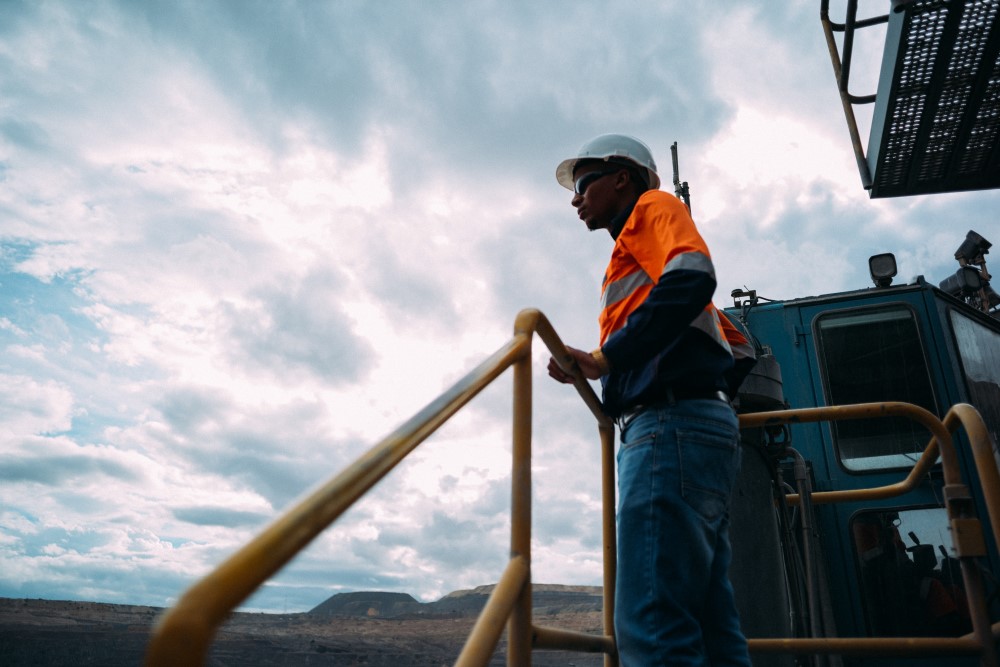
Debswana, a 50/50 joint venture between De Beers and Botswana's government, recently announced plans to make an initial investment of $1 billion in the Jwaneng underground project.
The mine began operations in 1982 and produces an average of 11 million carats per year.
In an exclusive interview with Rough & Polished's Mathew Nyaungwa, a De Beers spokesman who preferred anonymity said that feasibility studies revealed that transitioning to underground operations was the most economically viable option for extending the Jwaneng Mine's long-term future.
The spokesperson said that the exploration access development phase for the underground project will begin in May of this year and will include the establishment of a drilling platform to facilitate comprehensive sampling of the kimberlite pipes, the delivery of the early access decline for the underground mine, and the development of essential infrastructure to support the project's subsequent stages, which are Phase 1 mining and Phase 2 mining.
Below are excerpts from the interview.
Debswana recently approved a $1 billion investment for the “exploration access development phase” of the Jwaneng underground project. What necessitated the move to go underground?
Debswana’s Board’s approval of the investment in the Exploration Access Development phase of the Jwaneng underground project paves the way for the world’s most valuable diamond mine to transition from open pit to underground operations. Feasibility studies demonstrated that transitioning to underground operations was the most economically favourable option to extend the long-term future of the Jwaneng mine. Following the Exploration Access Development phase, the project will be developed in two further phases, Phase 1 mining and Phase 2 mining, to support long-term future production at the mine in an environment of tightening long-term diamond supply.
When will you start the exploration access development phase for the Jwaneng underground project?
The Exploration Access Development phase for the Jwaneng underground project will start in May this year and involves establishing a drilling platform to facilitate comprehensive sampling of the kimberlite pipes, delivering the early access decline for the underground mine, and developing essential infrastructure to support the forthcoming stages of the project, which are Phase 1 mining and Phase 2 mining.
How many carats are you expecting to add at Jwaneng as you go underground?
Since 1982, when Jwaneng Mine started operating, it has produced an average of almost 11 million carats per year. The Exploration Access Development phase of the project involves establishing a drilling platform to facilitate comprehensive sampling and evaluation of the kimberlite pipes at the underground mine level.
How are the JV partners funding the project?
The business will fund the project through capital investment from the partners in Debswana, as is the case with all Debswana capital investments.
De Beers commenced underground production at its Venetia Mine in Limpopo, South Africa, following an investment of $2.3 billion in 2012. What is your expected output from the project in 2024?
De Beers Group doesn’t provide forward-looking production estimates on a mine-by-mine basis.
What are the total resources added by the introduction of the underground project?
The project will deliver up to seven million tonnes of kimberlite ore per year to produce [about] 4 million carats of diamonds annually. As per this press release, the first production at Venetia mine occurred in July last year, with construction and production ramp-up continuing over the next few years.
Anglo-American said it will cut $100 million in De Beers’ annual expenses. What necessitated the decision, and how will it affect your operations?
We have recently been reviewing our strategic priorities as we focus on positioning De Beers for long-term success and maximising sustainable value. As part of this, we are also looking at the optimal organisational structure to support the delivery of the strategy and ensure the business is as effective and efficient as possible.
How did the market respond to your recently launched campaign to promote rough diamonds?
We saw a positive response from both consumers and the wider diamond industry to the reintroduction of our ‘A Diamond is Forever’ tagline and the return of the highly successful ‘Seize the Day’ campaign with a modern interpretation, supported by an additional $20 million investment to support consumer demand for natural diamonds during the 2023 holiday season. The investment supported a broad media mix in the US and China, covering traditional media and influencer-developed content, ensuring the key attributes of natural diamonds were conveyed in an engaging and relevant way. The campaign materials were also made available to retailers and the wider trade for their use free of charge.
What is De Beers’ reaction to sanctions imposed on ALROSA by the G7 and the European Union?
We fully support the objectives of the G7 countries to prohibit diamonds of Russian origin from entering their borders. We have valued the opportunities we’ve had to engage with representatives of the G7 Technical Committee to date.
However, there remains limited detail at this stage on how the new import restrictions will be implemented at each of the stages announced by the G7. While we’re encouraged by the stated commitment to further engagement with key stakeholders, we have ongoing concerns that if the intent is to apply a certification system and traceability solution with Belgium as the sole point of ingress to the G7 for rough diamonds produced outside of the G7, and if such a solution is intended to be fully technological, this would be to the detriment of African producers, artisanal miners and the wider industry, with significant risk of unintended consequences.
Mathew Nyaungwa, Editor in Chief of the African Bureau, Rough&Polished
